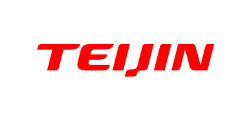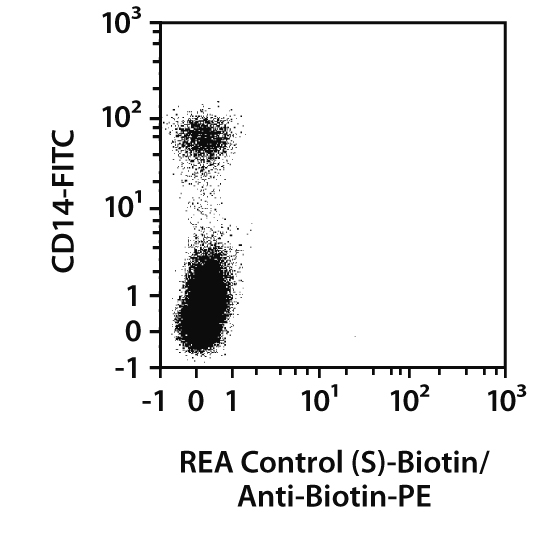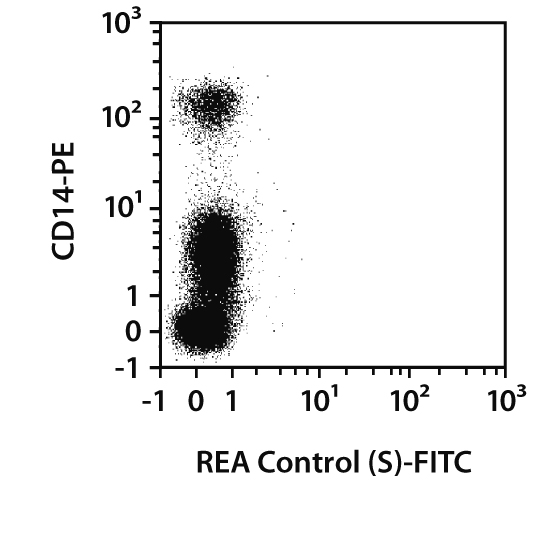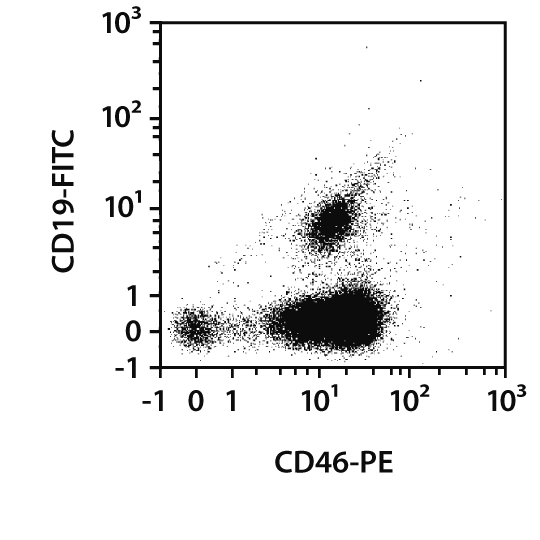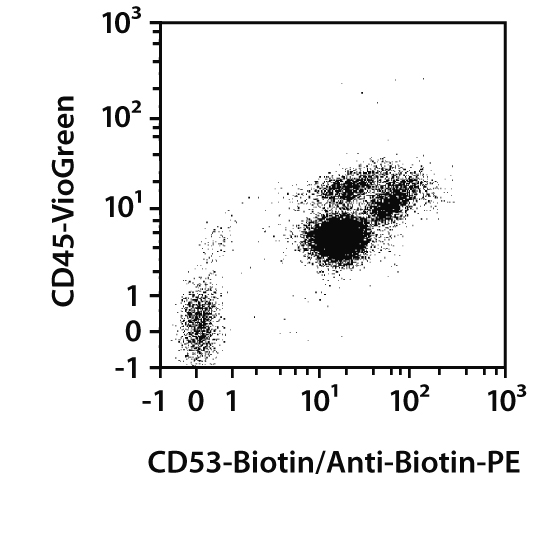Recombinant antibody
Code: 130-104-653
Overview
Clone REA302 recognizes the human CD312 antigen, a multi-pass membrane protein also known as EGF-like module-containing mucin-like hormone receptor-like 2 (EMR2) which shares strikingly similar molecular characteristics with CD97. CD312 is a member of the epidermal growth factor-seven transmembrane (EGF-TM7) family of proteins expressed predominantly by cells of the immune system. CD312 fails to interact with CD55, the cellular ligand for CD97, suggesting the possibility of different cellular ligands. CD312 interacts with chondroitin sulphate glycosaminoglycans in an isoform-specific manner. Expression of CD312 is up-regulated during differentiation and maturation of macrophages, and is conversely down-regulated during dendritic cell maturation. In monocytes and macrophages, CD312 can be specifically up-regulated by LPS and interleukin 10 (IL-10) via an IL-10–mediated pathway. In inflamed tissues, CD312 is detected in subpopulations of myeloid cells including macrophages and neutrophils. CD312 plays a role in the migration and adhesion of myeloid cells during cell differentiation, maturation, and activation.
Additional information: Clone REA302 displays negligible binding to Fc receptors.
Alternative names
ADGRE2, EMR2Specifications
- Human : 0
- PE : 0
- 30 tests : 0
- 0.3 ml : 0
- Recombinant Human IgG1 : 0
Code: 130-104-582
Overview
Clone REA302 recognizes the human CD312 antigen, a multi-pass membrane protein also known as EGF-like module-containing mucin-like hormone receptor-like 2 (EMR2) which shares strikingly similar molecular characteristics with CD97. CD312 is a member of the epidermal growth factor-seven transmembrane (EGF-TM7) family of proteins expressed predominantly by cells of the immune system. CD312 fails to interact with CD55, the cellular ligand for CD97, suggesting the possibility of different cellular ligands. CD312 interacts with chondroitin sulphate glycosaminoglycans in an isoform-specific manner. Expression of CD312 is up-regulated during differentiation and maturation of macrophages, and is conversely down-regulated during dendritic cell maturation. In monocytes and macrophages, CD312 can be specifically up-regulated by LPS and interleukin 10 (IL-10) via an IL-10–mediated pathway. In inflamed tissues, CD312 is detected in subpopulations of myeloid cells including macrophages and neutrophils. CD312 plays a role in the migration and adhesion of myeloid cells during cell differentiation, maturation, and activation.
Additional information: Clone REA302 displays negligible binding to Fc receptors.
Alternative names
ADGRE2, EMR2Specifications
- Human : 0
- FITC : 0
- 100 tests : 0
- 1 mL : 0
- Recombinant Human IgG1 : 0
Code: 130-104-654
Overview
Clone REA302 recognizes the human CD312 antigen, a multi-pass membrane protein also known as EGF-like module-containing mucin-like hormone receptor-like 2 (EMR2) which shares strikingly similar molecular characteristics with CD97. CD312 is a member of the epidermal growth factor-seven transmembrane (EGF-TM7) family of proteins expressed predominantly by cells of the immune system. CD312 fails to interact with CD55, the cellular ligand for CD97, suggesting the possibility of different cellular ligands. CD312 interacts with chondroitin sulphate glycosaminoglycans in an isoform-specific manner. Expression of CD312 is up-regulated during differentiation and maturation of macrophages, and is conversely down-regulated during dendritic cell maturation. In monocytes and macrophages, CD312 can be specifically up-regulated by LPS and interleukin 10 (IL-10) via an IL-10–mediated pathway. In inflamed tissues, CD312 is detected in subpopulations of myeloid cells including macrophages and neutrophils. CD312 plays a role in the migration and adhesion of myeloid cells during cell differentiation, maturation, and activation.
Additional information: Clone REA302 displays negligible binding to Fc receptors.
Alternative names
ADGRE2, EMR2Specifications
- Human : 0
- Biotin : 0
- 30 tests : 0
- 0.3 ml : 0
- Recombinant Human IgG1 : 0
Code: 130-104-507
Overview
Clone REA312 recognizes the human CD46 antigen, a type I transmembrane glycoprotein, which is also known as the membrane cofactor protein (MCP). At least fourteen different transcript variants encoding different isoforms have been found for CD46. It is expressed by a broad range of tissues including leukocytes, platelets, epithelial cells, and fibroblasts, but not by erythrocytes. CD46 acts as a co-factor for complement factor I, a serine protease which protects autologous cells against complement-mediated injury by cleaving C3b and C4b deposited on host tissue. It is involved in the fusion of the spermatozoa with the oocyte during fertilization. Additionally, CD46 functions as a receptor for measles virus, human herpesvirus, and human adenovirus. It is a potent costimulator for the induction of interferon-γ secreting effector T helper type 1 cells and their subsequent switch into interleukin 10 producing regulatory T cells.
Additional information: Clone REA312 displays negligible binding to Fc receptors.
Alternative names
Membrane cofactor protein (MCP), AHUS2, MCP, MIC10, TLX, TRA2.10Specifications
- Human : 0
- FITC : 0
- 100 tests : 0
- 1 mL : 0
- Recombinant Human IgG1 : 0
Code: 130-104-556
Overview
Clone REA312 recognizes the human CD46 antigen, a type I transmembrane glycoprotein, which is also known as the membrane cofactor protein (MCP). At least fourteen different transcript variants encoding different isoforms have been found for CD46. It is expressed by a broad range of tissues including leukocytes, platelets, epithelial cells, and fibroblasts, but not by erythrocytes. CD46 acts as a co-factor for complement factor I, a serine protease which protects autologous cells against complement-mediated injury by cleaving C3b and C4b deposited on host tissue. It is involved in the fusion of the spermatozoa with the oocyte during fertilization. Additionally, CD46 functions as a receptor for measles virus, human herpesvirus, and human adenovirus. It is a potent costimulator for the induction of interferon-γ secreting effector T helper type 1 cells and their subsequent switch into interleukin 10 producing regulatory T cells.
Additional information: Clone REA312 displays negligible binding to Fc receptors.
Alternative names
Membrane cofactor protein (MCP), AHUS2, MCP, MIC10, TLX, TRA2.10Specifications
- Human : 0
- FITC : 0
- 30 tests : 0
- 0.3 ml : 0
- Recombinant Human IgG1 : 0
Code: 130-104-508
Overview
Clone REA312 recognizes the human CD46 antigen, a type I transmembrane glycoprotein, which is also known as the membrane cofactor protein (MCP). At least fourteen different transcript variants encoding different isoforms have been found for CD46. It is expressed by a broad range of tissues including leukocytes, platelets, epithelial cells, and fibroblasts, but not by erythrocytes. CD46 acts as a co-factor for complement factor I, a serine protease which protects autologous cells against complement-mediated injury by cleaving C3b and C4b deposited on host tissue. It is involved in the fusion of the spermatozoa with the oocyte during fertilization. Additionally, CD46 functions as a receptor for measles virus, human herpesvirus, and human adenovirus. It is a potent costimulator for the induction of interferon-γ secreting effector T helper type 1 cells and their subsequent switch into interleukin 10 producing regulatory T cells.
Additional information: Clone REA312 displays negligible binding to Fc receptors.
Alternative names
Membrane cofactor protein (MCP), AHUS2, MCP, MIC10, TLX, TRA2.10Specifications
- Human : 0
- PE : 0
- 100 tests : 0
- 1 mL : 0
- Recombinant Human IgG1 : 0
Code: 130-104-557
Overview
Clone REA312 recognizes the human CD46 antigen, a type I transmembrane glycoprotein, which is also known as the membrane cofactor protein (MCP). At least fourteen different transcript variants encoding different isoforms have been found for CD46. It is expressed by a broad range of tissues including leukocytes, platelets, epithelial cells, and fibroblasts, but not by erythrocytes. CD46 acts as a co-factor for complement factor I, a serine protease which protects autologous cells against complement-mediated injury by cleaving C3b and C4b deposited on host tissue. It is involved in the fusion of the spermatozoa with the oocyte during fertilization. Additionally, CD46 functions as a receptor for measles virus, human herpesvirus, and human adenovirus. It is a potent costimulator for the induction of interferon-γ secreting effector T helper type 1 cells and their subsequent switch into interleukin 10 producing regulatory T cells.
Additional information: Clone REA312 displays negligible binding to Fc receptors.
Alternative names
Membrane cofactor protein (MCP), AHUS2, MCP, MIC10, TLX, TRA2.10Specifications
- Human : 0
- PE : 0
- 30 tests : 0
- 0.3 ml : 0
- Recombinant Human IgG1 : 0
Code: 130-101-814
Overview
Clone REA259 recognizes the CD53 antigen, a 35–42 kDa type II transmembrane glycoprotein, which is also known as tetraspanin-25. CD53 is expressed on all leukocytes including plasma cells, but not on platelets, erythrocytes, and non-hematopoietic tissues. CD53 mediates oxidative burst in monocytes and has been shown to interact with a number of proteins including IL-4, CD20, CD2, CD9, IL-2, VLA-4, and CD4. Cross-linking of CD53 on monocytes induces a strong increase in intracellular calcium ions, whereas a modest increase is seen in B lymphocytes. In resting B cells, the molecule transmits a co-stimulatory signal and promotes activation through the Ig receptor.
Additional information: Clone REA259 displays negligible binding to Fc receptors.
Alternative names
MOX44, TSPAN25Specifications
- Human : 0
- Biotin : 0
- 100 tests : 0
- 1 mL : 0
- Human IgG1 : 0



